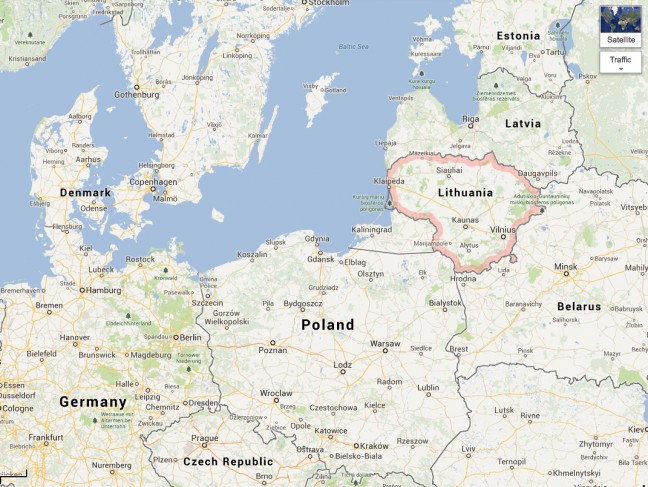The fear of an annual tax audit brings many people to their knees. It’s one of many techniques that government authorities use to milk their citizens of every last penny of taxes. Well, authorities now have an even more powerful weapon to add to their tax collecting arsenal — Google Street View. And, if you are reading this from Lithuania you will know what we are talking about.
From the Wall Street Journal:
One day last summer, a woman was about to climb into a hammock in the front yard of a suburban house here when a photographer for the Google Inc. Street View service snapped her picture.
The apparently innocuous photograph is now being used as evidence in a tax-evasion case brought by Lithuanian authorities against the undisclosed owners of the home.
Some European countries have been going after Google, complaining that the search giant is invading the privacy of their citizens. But tax inspectors here have turned to the prying eyes of Street View for their own purposes.
After Google’s car-borne cameras were driven through the Vilnius area last year, the tax men in this small Baltic nation got busy. They have spent months combing through footage looking for unreported taxable wealth.
“We were very impressed,” said Modestas Kaseliauskas, head of the State Tax Authority. “We realized that we could do more with less and in shorter time.”
More than 100 people have been identified so far after investigators compared Street View images of about 500 properties with state property registries looking for undeclared construction.
Two recent cases netted $130,000 in taxes and penalties after investigators found houses photographed by Google that weren’t on official maps.
From aerial surveillance to dedicated iPhone apps, cash-strapped governments across Europe are employing increasingly unconventional measures against tax cheats to raise revenue. In some countries, authorities have tried to enlist citizens to help keep watch. Customers in Greece, for instance, are insisting on getting receipts for what they buy.
For Lithuania, which only two decades ago began its transition away from communist central planning and remains one of the poorest countries in the European Union, Street View has been a big help. After the global financial crisis struck in 2008, belt tightening cut the tax authority’s budget by a third. A quarter of its employees were let go, leaving it with fewer resources just as it was being asked to do more.
“We were pressured to increase tax revenue,” said the authority’s Mr. Kaseliauskas.
Street View has let Mr. Kaseliauskas’s team see things it would have otherwise missed. Its images are better—and cheaper—than aerial photos, which authorities complain often aren’t clear enough to be useful.
Sitting in their city office 10 miles away, they were able to detect that, contrary to official records, the house with the hammock existed and that, in one photograph, three cars were parked in the driveway.
An undeclared semidetached house owned by the former board chairman of Bank Snoras, Raimundas Baranauskas, was recently identified using Street View and is estimated by the government to be worth about $260,000. Authorities knew Mr. Baranauskas owned land there, but not buildings. A quick look online led to the discovery of several houses on his land, in a quiet residential street of Vilnius.
Read the entire article here.
Image courtesy of (who else?), Google Maps.

